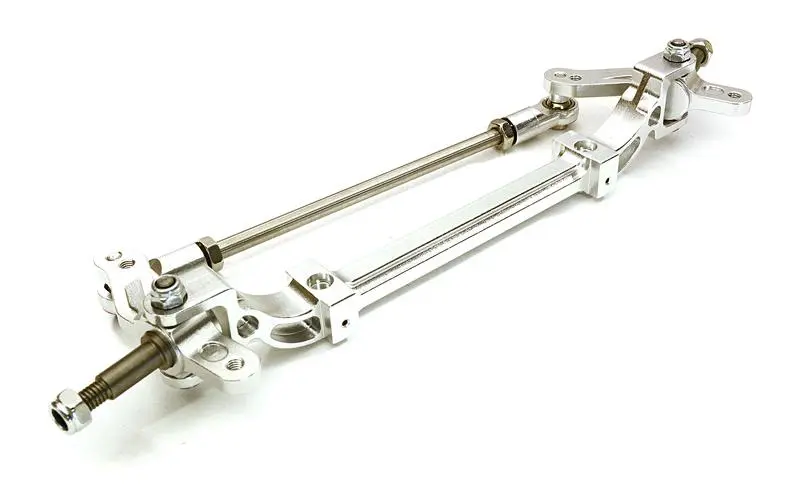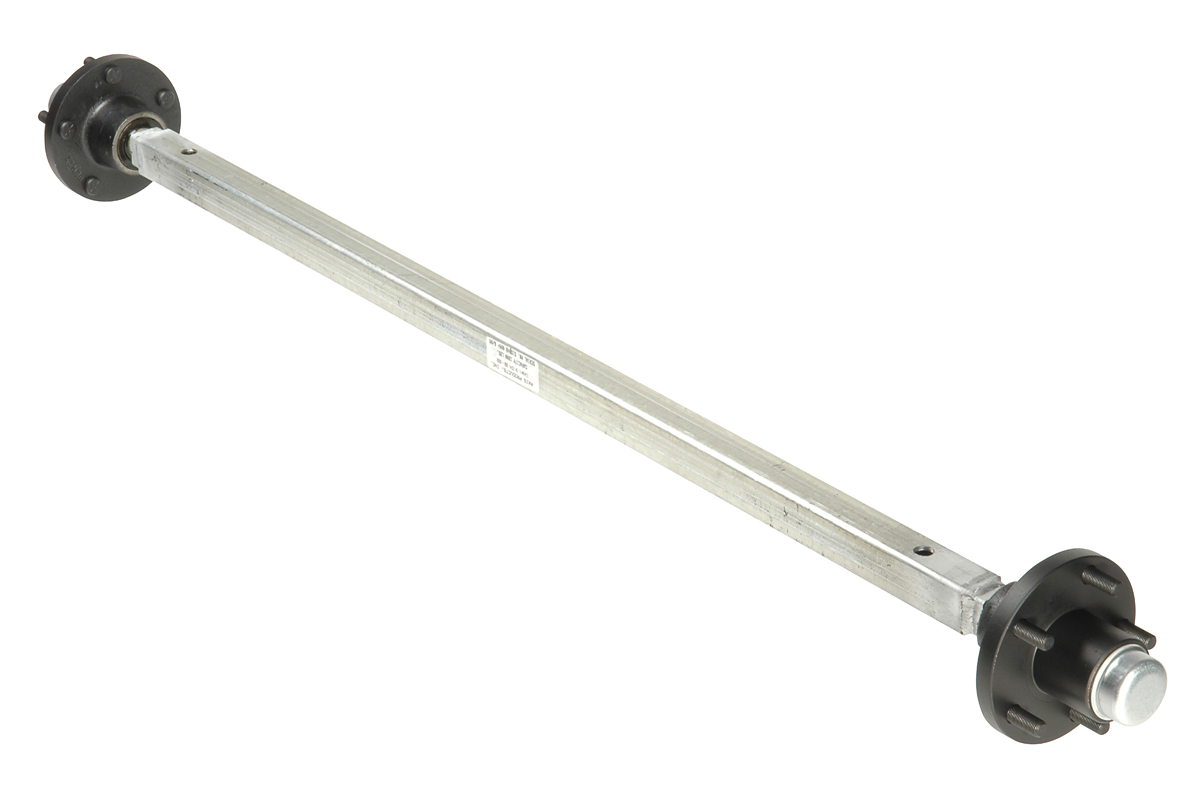Product Description
Manufacturer 8t-25t American Inboard Built-in Brake Drum Axle for Trailer truck
Product Parameters
| Axle Type | Max Capacity(t) | Track(mm) | Brake(mm) | Spring Seat Installation | Axle Beam(mm) | Centre Distance Of Brake Chamber(mm) | Wheel Fixing | Total Length(mm) | Recommended Wheel | Axle Wright(kg) | ||
| Stud | P.C.D(mm) | H(mm) | ||||||||||
| JS08Y2C15 | 8 | 1850 | 420*150 | ≥1080 | 127 | 428 | 10*M22*1.5 ISO | 335 | 280.8 | ~2145 | 7.5V-20 | 323 |
| JS13Y9C10 | 13 | 1840 | 420*180 | ≥970 | 127 | 380 | 10*M22*1.5 ISO | 335 | 280.8 | ~2180 | 7.5V-20 | 342 |
| JS13F1B10 | 13 | 1840 | 420*180 | ≥930 | 150 | 380 | 10*M22*1.5 ISO | 335 | 280.8 | ~2180 | 7.5V-20 | 340 |
| JS14F1B11 | 14 | 1840 | 420*220 | ≥930 | 150 | 340 | 10*M22*1.5 ISO | 335 | 280.8 | ~2180 | 7.5V-20 | 358 |
| JS15F6B11 | 15 | 1850 | 420*180 | ≥940 | 150 | 390 | 10*M22*1.5 ISO | 335 | 280.8 | ~2200 | 8.0V-20 | 370 |
| JS16F6B11 | 16 | 1850 | 420*220 | ≥940 | 150 | 350 | 10*M22*1.5 ISO | 335 | 280.8 | ~2200 | 8.0V-20 | 388 |
| JS20F8B12 | 20 | 1850 | 420*220 | ≥940 | 150 | 345 | 10*M24*1.5 ISO | 335 | 280.8 | ~2247 | 8.0V-20 | 430 |
| JS25H8B12 | 25 | 1850 | 420*220 | ≥940 | 150 | 340 | 10*M24*1.5 ISO | 335 | 280.8 | ~2215 | 8.0V-20 | 474 |
Detailed Photos
Packaging & Shipping
Company Profile
ZheJiang CZPT Axle Manufacturing Co., Ltd., founded in 2000, is a professional manufacturer of trailer axle assemblies, semi-trailer suspension systems and correlative fittings in China. We are located in Quanpu Industry Zone which is the largest production base of trailers in China, in Xihu (West Lake) Dis., the famous scenic spot. We are 1 of specialized enterprises in the scientific research, design, production and sale, with more than 300 skilled employees and professional designers for different areas. We adopt the domestic and international technical standards in production, accurately grasp the information of the market demand and make quick and optimal designs. In this way, our axle, suspension and other fittings have the world-class technical quality through reasonable and advanced manufacture technologies. Our advanced processing technology, first-class production line and precision CNC machining equipment from home and abroad ensure the good quality of our semi-trailer axle assemblies, suspension systems and other correlative fittings. At the same time, our annual capacity for the export of American and German semi-trailer axle assemblies has achieved 60, 000 pieces and of suspension assemblies has achieved 50, 000 sets. We obtained the ISO9001: 2000 International Quality Management System Certification in 2003 and TS16949 Certification in 2007. “First-class product quality, the meticulous and thoughtful service, and CZPT cooperation” is the philosophy that we always cherish. We not only meet the domestic market demand, but also export our products to Southeast Asia, the Middle East, Latin America and other countries, enjoying a good reputation. We always regard quality as life, and client as God. We will create a brilliant tomorrow with your sincere cooperation and support.
/* January 22, 2571 19:08:37 */!function(){function s(e,r){var a,o={};try{e&&e.split(“,”).forEach(function(e,t){e&&(a=e.match(/(.*?):(.*)$/))&&1
| After-sales Service: | 24 Hours Online |
|---|---|
| Condition: | New |
| Axle Number: | 2 |
| Application: | Trailer |
| Certification: | CE, ISO |
| Material: | Iron |
| Samples: |
US$ 500/Piece
1 Piece(Min.Order) | |
|---|
| Customization: |
Available
| Customized Request |
|---|

How does the weight distribution affect the performance of beam axles?
The weight distribution significantly impacts the performance of vehicles equipped with beam axles, and it plays a crucial role in determining their stability and handling characteristics. Here’s how weight distribution affects the performance of beam axles:
1. Balance and Stability:
The even distribution of weight among the vehicle’s axles is essential for maintaining balance and stability. When the weight is evenly distributed, the vehicle is less likely to experience weight shifts that can lead to instability or loss of control, especially during cornering and sudden maneuvers.
2. Oversteer and Understeer:
Weight distribution affects a vehicle’s tendency to oversteer or understeer. Oversteer occurs when the rear of the vehicle loses traction and swings outward during a turn, potentially leading to a loss of control. Understeer happens when the front tires lose traction, causing the vehicle to plow straight ahead rather than following the intended path. Proper weight distribution minimizes the risk of oversteer or understeer, contributing to predictable and safe handling.
3. Traction and Grip:
Weight distribution influences the amount of weight pressing down on each tire. Adequate weight on each tire enhances traction and grip, especially when driving on slippery or uneven surfaces. When too much weight is concentrated on a single axle, it can lead to wheel spin and reduced traction, affecting the vehicle’s performance off-road or in adverse weather conditions.
4. Load-Carrying Capacity:
For vehicles designed to carry heavy loads or passengers, proper weight distribution is critical to ensure that the suspension and beam axles can support the weight without strain. An imbalanced load can lead to premature wear and tear on suspension components, reducing the vehicle’s load-carrying capacity and potentially compromising safety.
5. Maneuverability:
Well-balanced weight distribution improves a vehicle’s maneuverability. It makes the vehicle more responsive to steering inputs, facilitating smoother and more controlled handling. This is particularly important for commercial and utility vehicles that need to navigate through tight spaces or make precise movements.
6. Tire Wear:
Uneven weight distribution can result in uneven tire wear. When one set of tires carries a significantly higher load than the others, those tires may wear out faster, leading to the need for premature replacement. Proper weight distribution helps ensure even tire wear and extends the lifespan of the tires.
Summary:
Weight distribution is a critical factor in optimizing the performance of vehicles equipped with beam axles. Properly balanced weight contributes to stability, predictable handling, enhanced traction, and increased load-carrying capacity. It ensures that the beam axles and suspension components operate efficiently, promoting the vehicle’s safety and overall performance.

Can you describe the maintenance and repair considerations for beam axles?
Maintenance and repair of beam axles, also known as solid axles or live axles, are essential to ensure the longevity and proper functioning of a vehicle. Here are some key maintenance and repair considerations:
Maintenance:
- 1. Lubrication: Regularly inspect and lubricate the axle’s components, such as the bearings, bushings, and kingpins. Proper lubrication helps reduce friction and wear.
- 2. Inspection: Periodically inspect the axle for signs of damage, wear, or corrosion. Check for leaks from the axle’s seals and inspect the axle housing for cracks or dents.
- 3. Tire Alignment: Proper tire alignment is crucial to prevent uneven tire wear and maintain vehicle stability. Ensure that the wheels are aligned correctly to minimize stress on the axle components.
- 4. Wheel Balancing: Imbalanced wheels can cause vibrations and additional stress on the axle. Regularly balance the wheels to prevent premature wear of axle components.
- 5. Tightening Fasteners: Check and tighten fasteners, such as U-bolts and mounting brackets, to ensure they are secure and prevent axle misalignment.
Repair:
- 1. Bearing Replacement: If you notice excessive play, noise, or vibrations in the wheel, it may be a sign of bearing wear. Bearings should be replaced promptly to prevent further damage to the axle.
- 2. Seals and Gaskets: Leaking seals and gaskets should be replaced to prevent oil or grease loss and maintain proper lubrication of axle components.
- 3. Bushings and Kingpins: Worn or damaged bushings and kingpins can affect steering and handling. Replacement may be necessary to restore proper function.
- 4. Axle Straightening: In cases of minor axle damage or bending, some axles can be straightened and repaired. However, severe damage may require axle replacement.
- 5. Welding and Fabrication: In the event of cracks or structural damage to the axle housing, welding and fabrication may be required. This should be performed by a skilled professional to ensure the axle’s integrity.
- 6. Alignment: Proper alignment is critical to prevent uneven tire wear and handling issues. If the axle is misaligned, it should be realigned by a professional technician.
It’s important to note that the complexity of maintenance and repair tasks may vary depending on the type of vehicle and the specific design of the beam axle. Additionally, regular inspections and maintenance can help detect issues early, preventing more extensive and costly repairs in the long run. When performing maintenance and repairs on beam axles, it’s recommended to consult the vehicle’s service manual and seek assistance from qualified mechanics when needed.

Are there different types of beam axles for various vehicle applications?
Yes, there are different types of beam axles designed for various vehicle applications. These variations in beam axles are tailored to meet the specific needs of different types of vehicles and usage scenarios. Here are some of the different types:
1. Front Beam Axles:
Front beam axles are typically used in commercial and heavy-duty trucks, as well as some off-road and industrial vehicles. They are designed to provide robust load-bearing capabilities and stability for front-wheel drive vehicles, especially those used in construction, mining, and transportation of heavy loads.
2. Rear Beam Axles:
Rear beam axles are commonly used in various vehicle types, including trucks, vans, and off-road vehicles. They offer load-carrying capacity and are suitable for applications where traction and durability are important. In trucks, the rear beam axle often supports the weight of the cargo.
3. Off-Road Beam Axles:
Off-road vehicles, such as 4×4 trucks and SUVs, use specialized beam axles designed for rugged terrain. These beam axles provide increased articulation and durability, allowing the vehicle to maintain traction and control in challenging off-road conditions.
4. Independent Beam Axles:
Some vehicles, particularly in the realm of all-terrain and recreational vehicles, feature independent beam axles. These axles combine the strength of beam axles with the ability to articulate independently, offering a compromise between load-bearing capacity and off-road performance.
5. Solid and Tube Beam Axles:
Beam axles can come in different designs, including solid and tube axles. Solid beam axles consist of a single, solid shaft, while tube axles are hollow, reducing weight while maintaining strength. The choice depends on the vehicle’s requirements.
6. Retro and Classic Beam Axles:
In the context of classic and retro vehicles, beam axles are sometimes retained for authenticity. Modern vehicles with retro styling may incorporate beam axles to capture the aesthetics and character of older vehicle designs.
7. Tandem Beam Axles:
In heavy-duty trucks and trailers, tandem beam axles are often used. These axles are arranged in tandem pairs to distribute the load more evenly and improve load-bearing capacity, making them suitable for long-haul transportation.
The choice of beam axle type depends on the intended use, vehicle design, and the specific demands of the application. Manufacturers select the appropriate beam axle configuration to optimize vehicle performance, load-carrying capacity, and durability for a given scenario.


editor by CX 2024-04-30